The city of Allahabad already holds two million people uncomfortably. When another 125 million guests squeeze into the city, which is only one-tenth the square mileage of New York City, sardines in a can don’t seem to have it so bad.
But a lack of personal space seems like a small price to pay for a perceived chance to erase sins accumulated over the past three years.
Every three years, roughly 125 million Indians journey to one of the four cities in India considered sacred for a forty-five-day-long Hindu festival, the Kumbh Mela (kum-mayla). The cities of Allahabad (now called Prayagraj) Ujjain, Haridwar, and Nashik take turns hosting the masses, usually with thirty million in the city at a time. The pilgrimage makes the event the largest religious gathering in the world. To put it in perspective, roughly two million Muslims journey to Mecca each year for hajj. Less than 100,000 Catholics gather to hear the Pope’s Easter address at the Vatican.
Those who can afford it make the journey every three years. For others, it’s a trip of a lifetime, with the next lifetime dependent on it. We sent a photographer to this year’s Kumbh Mela in Allahabad to help us experience the sights and spirituality of the festival and, most importantly, to increase our prayers and awareness of the eternal destinies of 125 million pilgrims banking on mystical waters to wash away their sins.
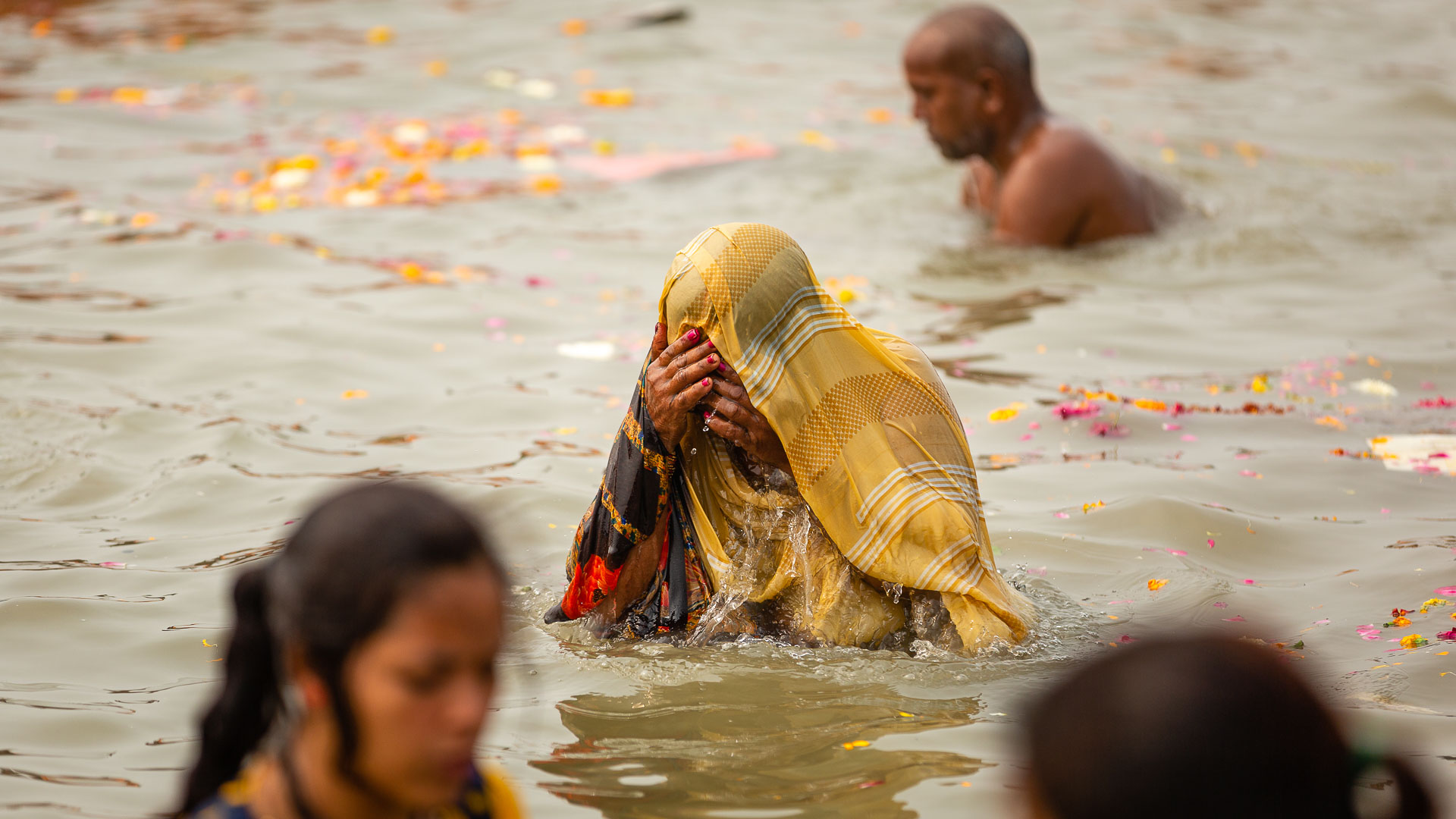
An Indian woman bathes at the confluence of the Ganges and Yamuna Rivers during the Kumbh Mela. Hindus dip in the rivers in hopes of washing away their sins. Photo by Max Power.
The Story of the Kumbh Mela
In order to understand the Mela, it’s helpful to know what motivates people to travel across the subcontinent to participate. The Kumbh Mela dates back to at least the seventh century, though the lore that inspired it is centuries older than that.
As with any Hindu mythological story, the version varies from person to person. But a common telling of the tale involves a kumbh (pitcher) of eternal life and a fight between gods and demons over its possession. As the legend goes, a Hindu goddess concocted a nectar believed to give eternal life to whoever churned, then consumed it. Originally, only Hindu gods had access to the nectar. But when their divine nemeses—demons—learned of its existence, an argument ensued over who should have access to the kumbh’s life-giving liquid.
In the heat of the debate, one of the gods, Vishnu, told the gods and demons he would serve them all nectar if they would stop fighting and sit down. The parties did as they were told, but Vishnu secretly served the demons water and the gods nectar. When the demons figured out they had been tricked, Vishnu flew away with the kumbh of nectar. During his flight he accidentally spilled some of the nectar in four places along the Ganges River: Allahabad, Haridwar, Ujjain, and Varanasi.
The story of the actual kumbh stops there, but Hindus believe the gods come back to one location every three years to stir the river and reactivate the nectar’s eternal life-giving qualities. And every three years, millions of Hindus travel to that year’s designated location to submerge themselves in the freshly stirred remnant of nectar swirling in the Ganges River. Their “dipping,” as they call it, erases their sin and enables the nectar to take its effect for their afterlife. Its potency is only guaranteed for three years, until the next Kumbh Mela.
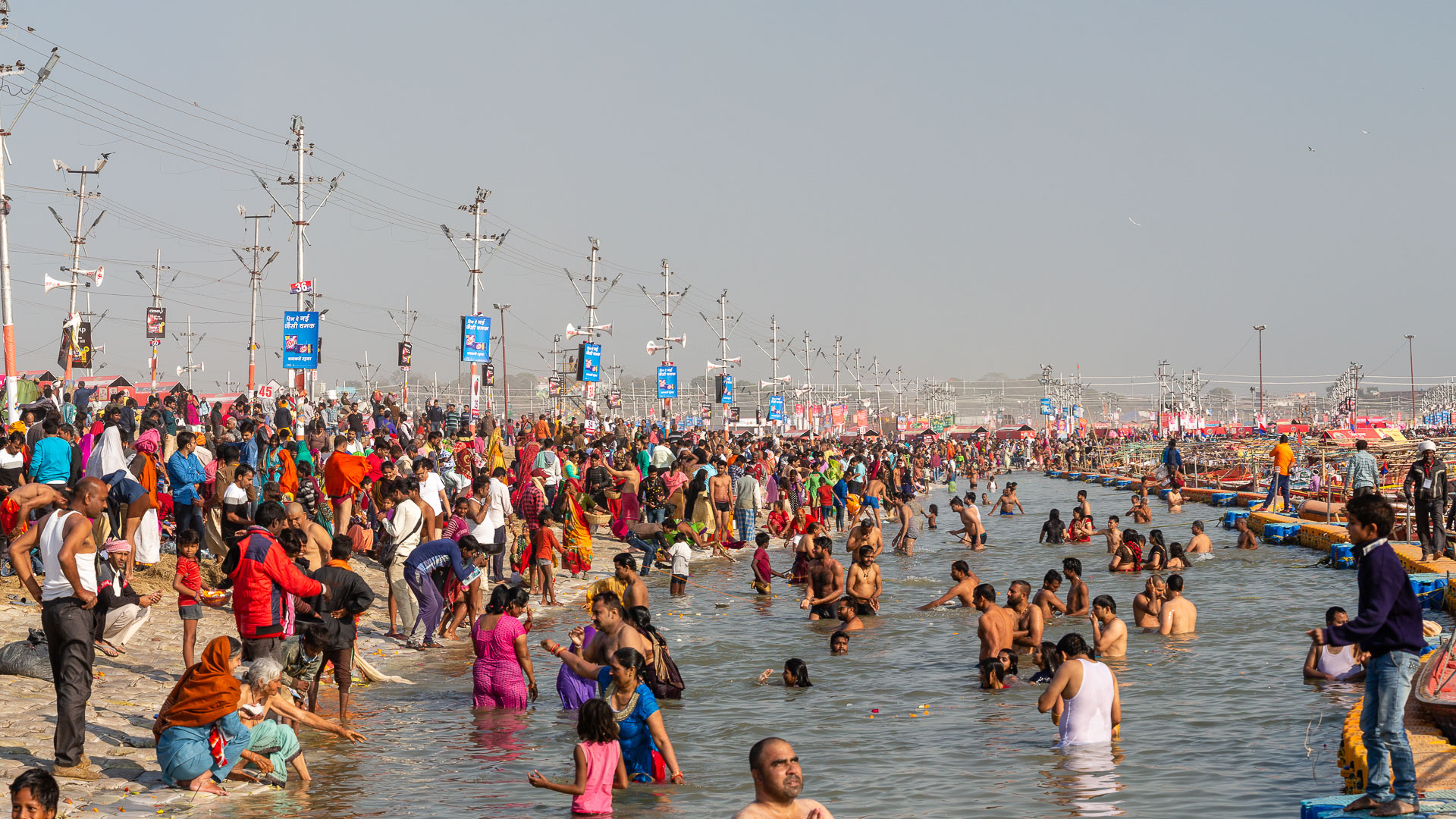
For many Hindus, bathing in the Ganges and Yamuna Rivers at Kumbh Mela is a solemn ritual. For others it is like a fun day at the riverside with picnics and playing in the water. Photo by Max Power.
For the Poor and Powerful
In a country with no official religion, the Kumbh Mela is an all-country affair. India’s top government officials, including Prime Minister Narendra Modi, come to dip, offer prayers, and participate in the festival’s many cultural events. Indian Railways, India’s government-run railway system, added eight hundred trains and dropped ticket prices to five rupees (roughly 7 cents) to ensure all people who want to attend can.
An estimated two thousand artisans and businessmen from every corner of India come with makeshift stalls to sell bronze idols for tabletops, knickknacks to keep kids entertained, and scarves to ward off the morning chill.
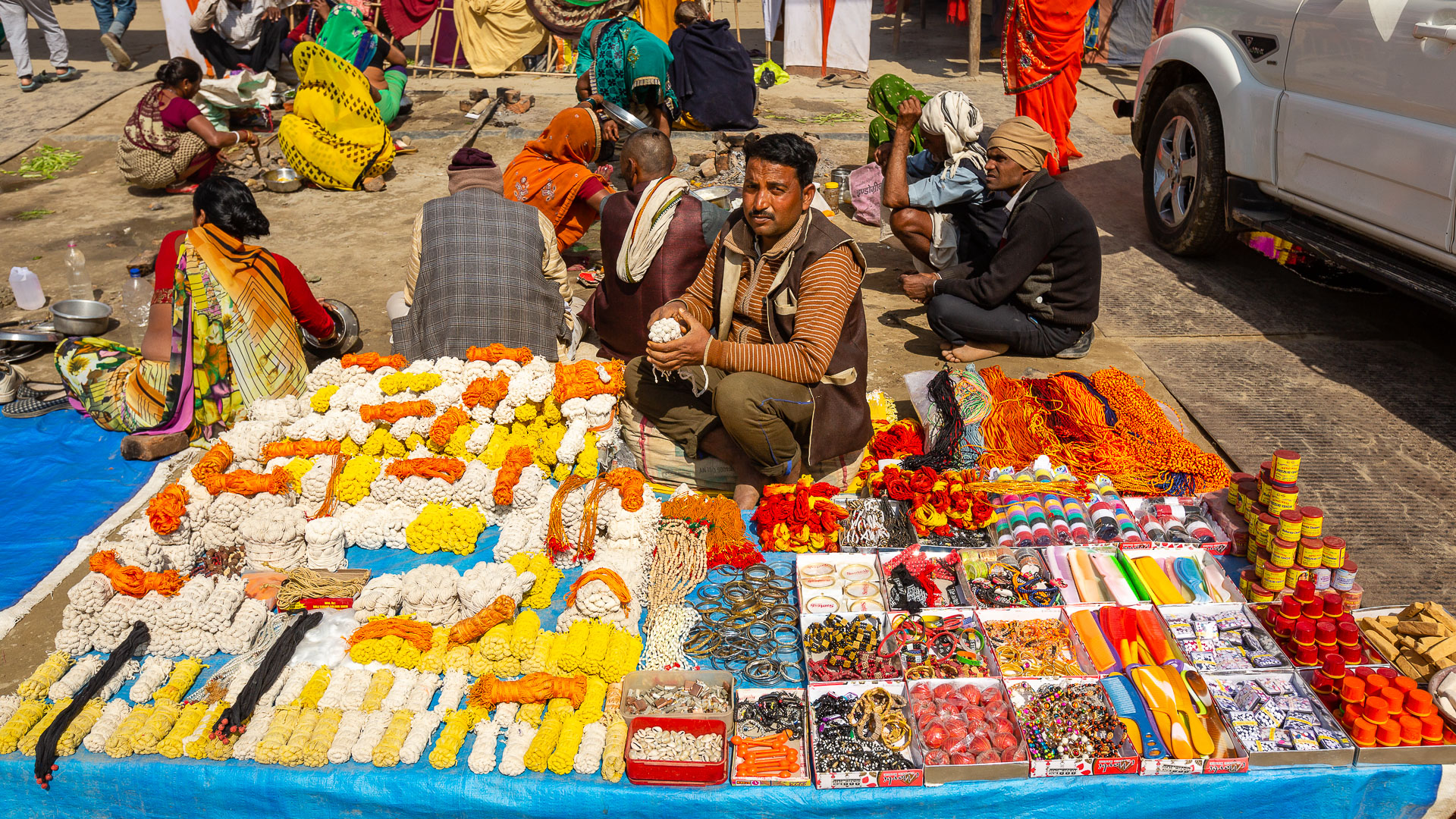
While primarily a religious festival, Kumbh Mela is also a fair full of enterprising vendors like this man selling sacred threads on one side of his tarp and fashion accessories on the other. Photo by Max Power.
Actors reenact dramas from Hindu mythologies or perform meticulously choreographed dances that date back centuries.
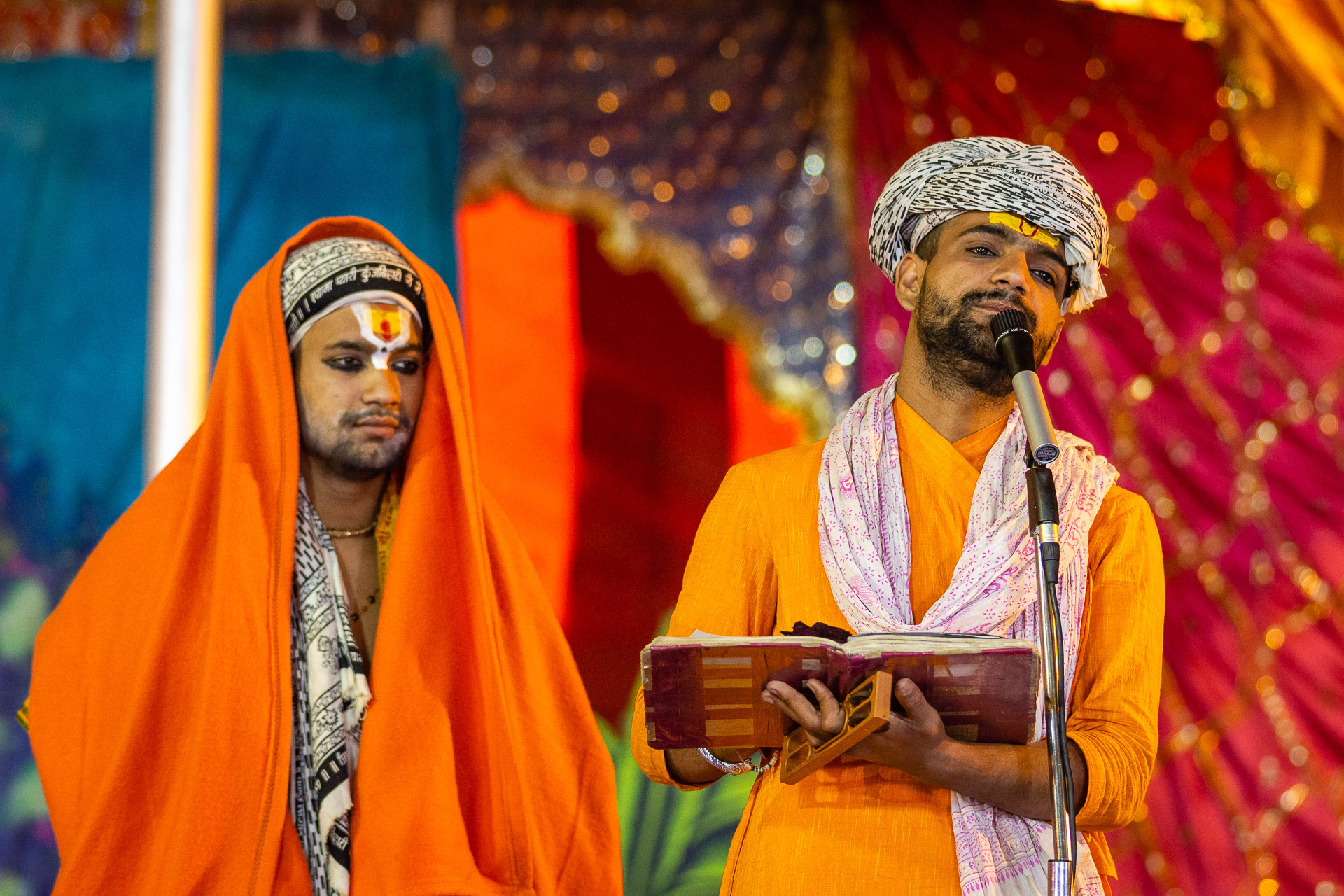
A sadhu reads from his guru’s writings while other followers act out dramatizations of the teachings. Photo by Max Power.
One of the most celebrated and, for people unfamiliar with the festival, jarring traditions is the parade of an estimated two hundred thousand Hindu holy men into the city at the start of the festival.
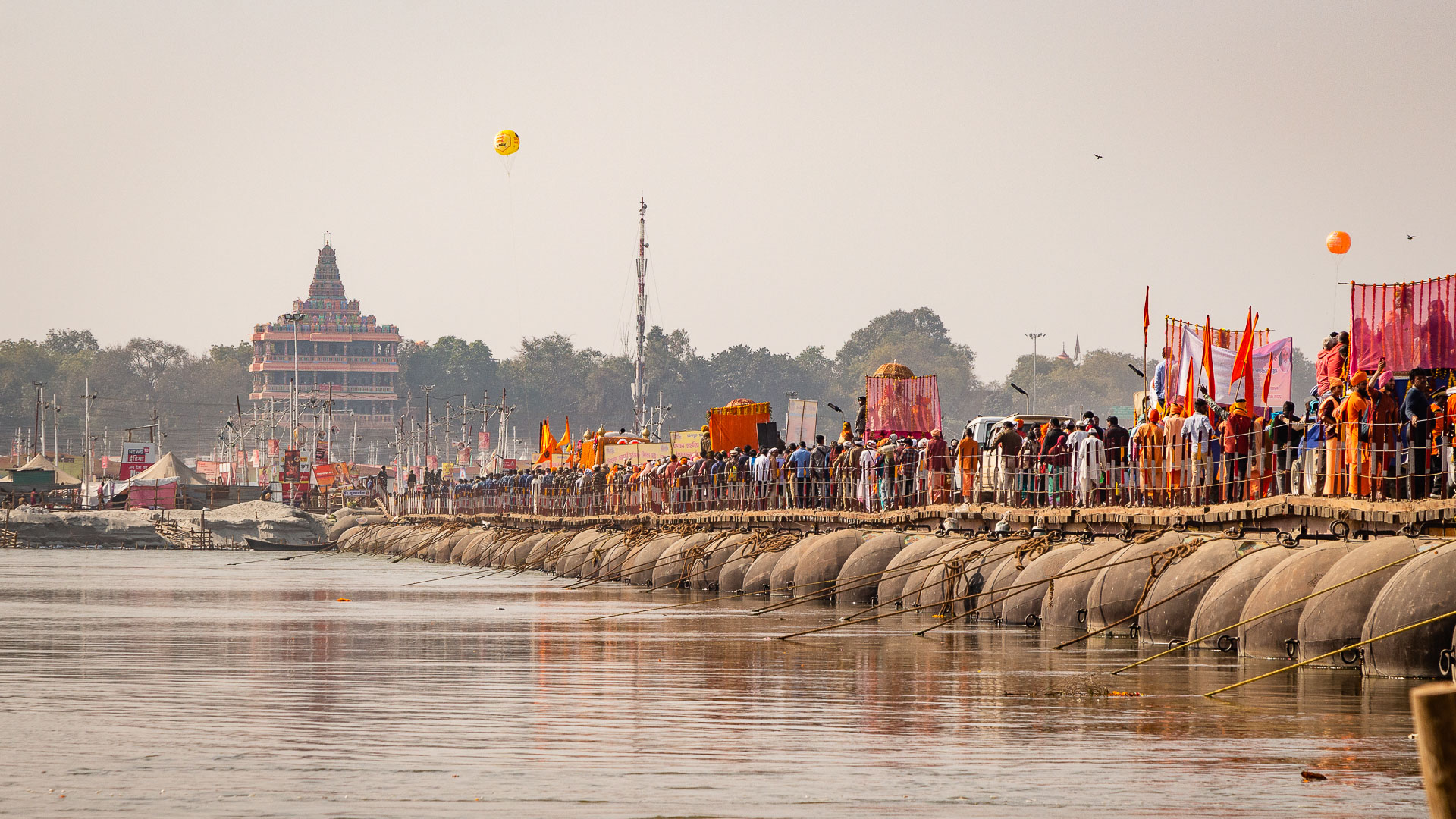
A procession of gurus crosses a pontoon bridge across the Ganges River. The gurus will be among the first to dip in the river after they offer a blessing for the festival. Photo by Max Power.
Millions of Hindus gather near the Kumbh Mela’s entrance to welcome Hindu ascetics in various stages of dress, many with waist-long dreadlocks and covered in ash. Elephants, horses, and camels—animals of pomp and ancient royalty—often carry the men into the city so they can bless and begin the event.
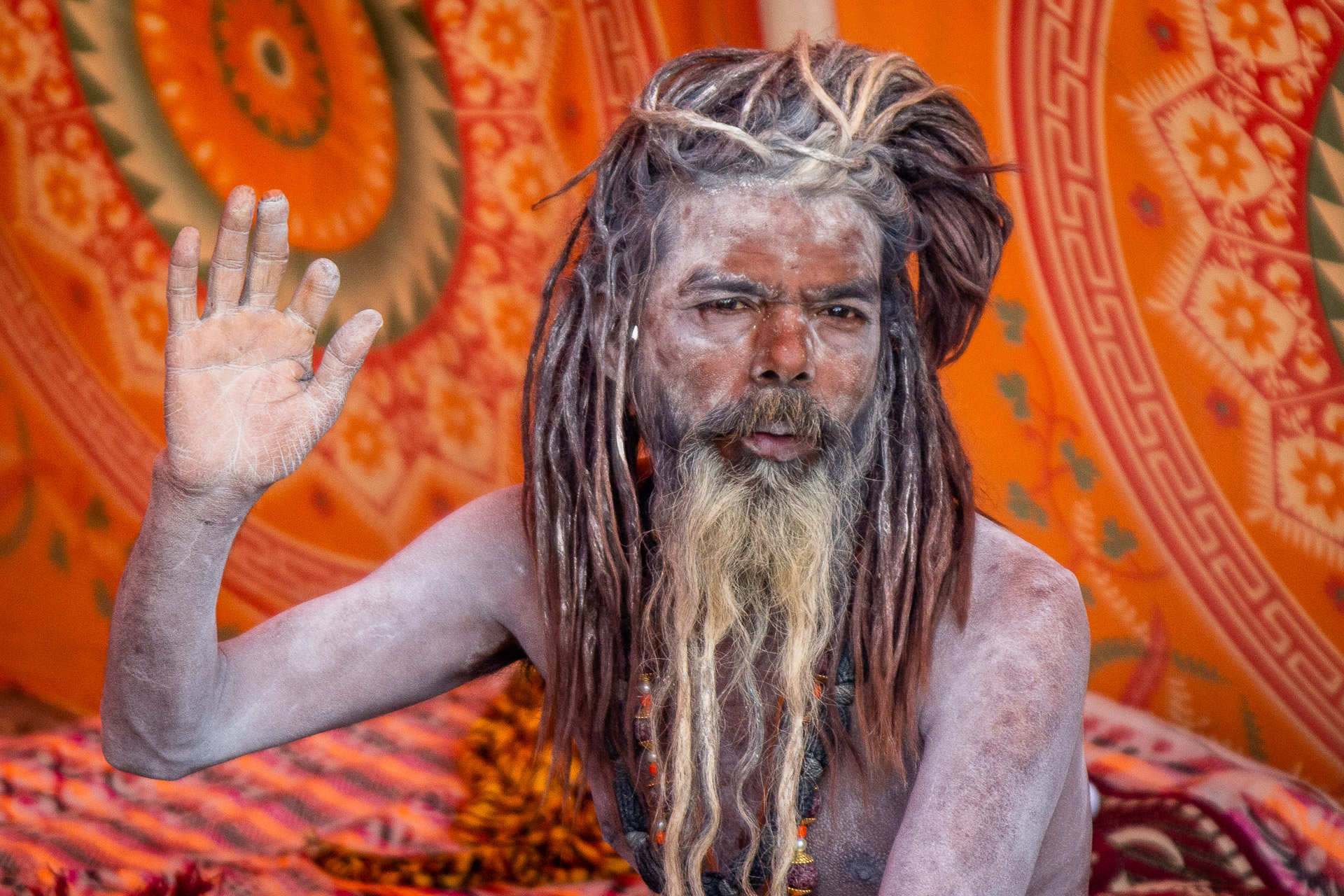
Hindu ascetics, called sadhus, come to the Kumbh Mela from the secluded places in which they live. Hindus gather at a sadhu’s temporary tent at the Kumbh Mela to receive blessing and teaching from the sadhu. Photo by Max Power.
The Main Event
But throughout the festival, amid the parades and shopping and potential celebrity sightings, dipping into Allahabad’s water remains the centerpiece of the event. Of all four Kumbh Mela locations, Allahabad is considered the most auspicious for dipping. According to lore, Vishnu spilled the nectar in Allahabad where the two rivers considered holy—the Ganges and Yamuna—converge to create a third, mystical river. The spot where the three rivers are believed to flow together is the most desired place for Hindus to dip and receive eternal life.
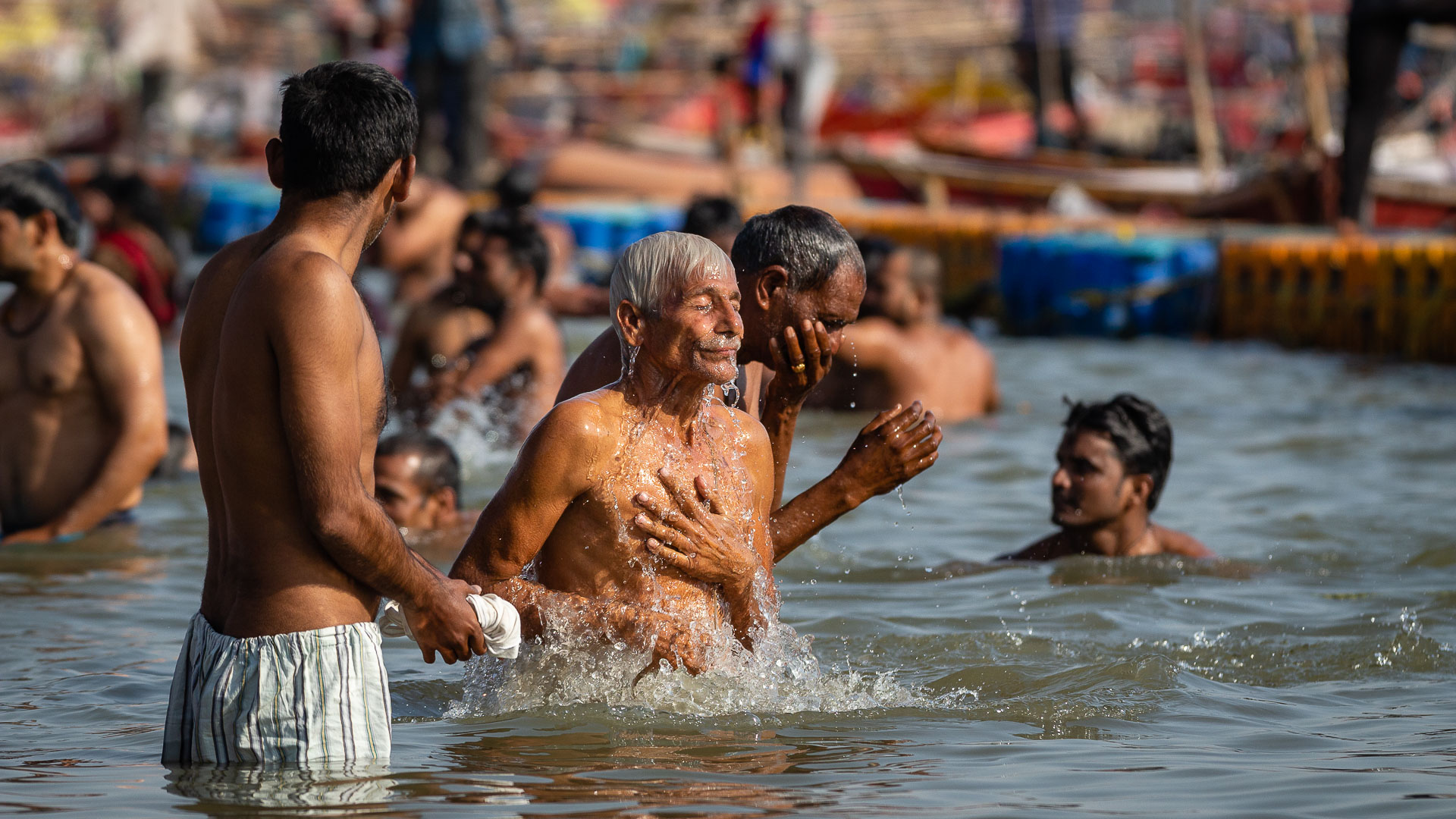
An elderly man bathes in the chilly waters of the Ganges River in February 2019 during the Kumbh Mela in Prayagraj, India. Photo by Max Power.
Boats bob along the shore ready to take patrons, starting with high-caste Hindus, government officials, and holy men, out to the mystical center of the waters. People who can’t afford a boat ride or feel more comfortable near land dip in waters marked off by bamboo fences meant to keep people close to shore.

Millions of Hindus come each day during the six-week-long Kumbh Mela festival to bath in the cold waters of the Ganges and Yamuna Rivers to wash away their sins. Photo by Max Power.
Women wade out in complicatedly fastened saris. Men strip down to their shorts or underwear. All wade out to waist-deep water, fold their hands in prayer, and dip. When they emerge from the frigid Ganges, they believe in the deepest part of themselves that their sin has been erased for the next three years. They try to believe, at least.
So, What?
Earlier this week, on March 4, 2019, the Kumbh Mela ended. Allahabad was emptied of its visitors and regained some breathing room. The last of the pilgrims boarded trains or piled into cars for the journey home. Hindu holy men retreated back into the forests to resume a life of quiet minimalism. Locals dismantled elaborate, temporary temples, and the city’s normal rhythm resumed.
Although people have celebrated the Kumbh Mela for centuries, never in modern history have we had such a vivid picture of the masses searching for eternal security and believing they have found it. And of the 125 million people who filtered in and out of the festival’s organized chaos, it’s likely that less than 2 percent of them have ever had a chance to hear the gospel.
We can see men and women praying in the shallows of the Ganges, and we can pray for them to hear the good news of salvation that will never perish, spoil, or fade (1 Pet. 1:3–4).
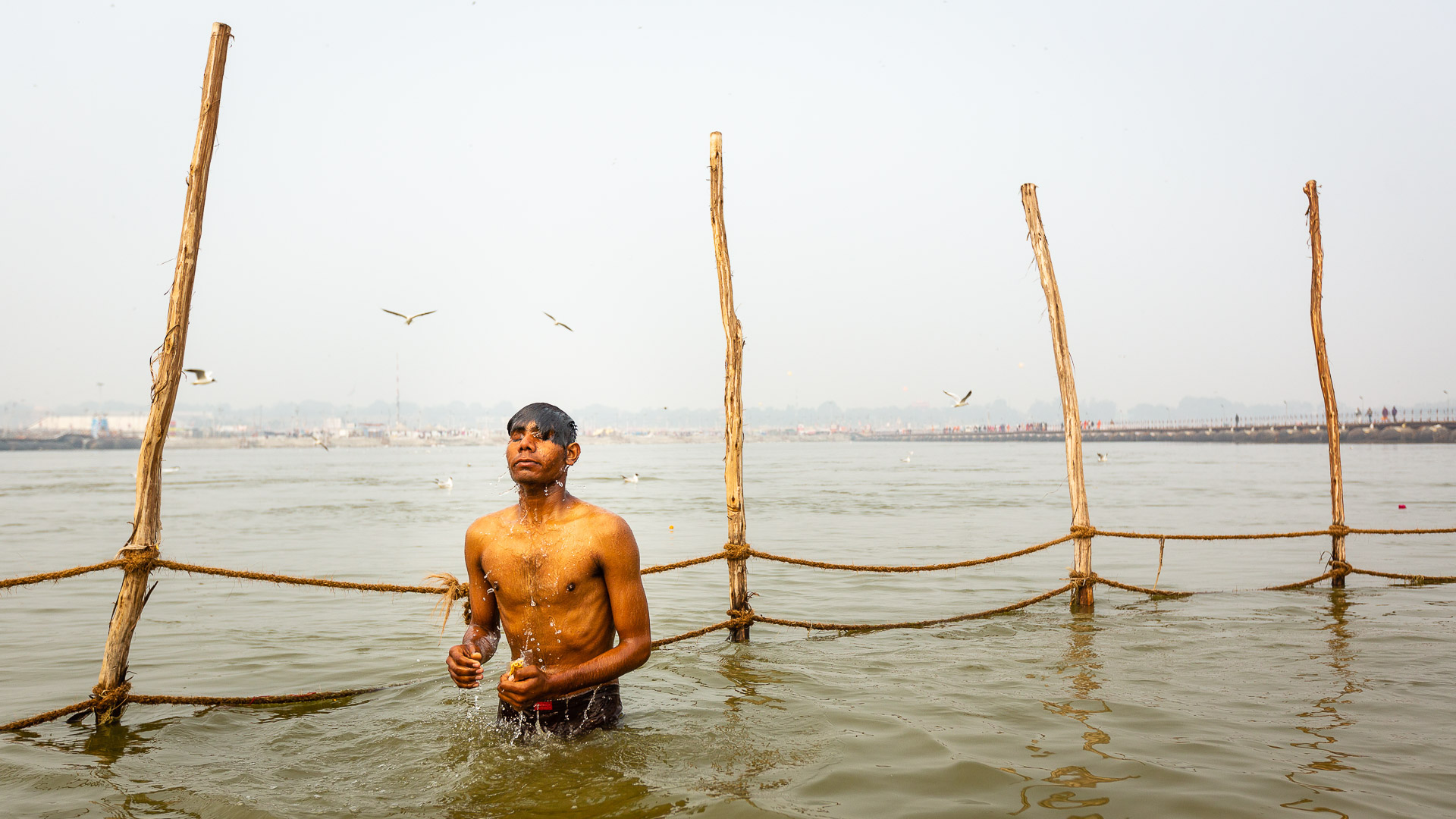
A young man emerges from his dipping in the Ganges River for the remission of his sins. Photo by Max Power.
We can see people waving flags for men, and we can ask the One to whom palm branches will be waved in heaven to reveal himself as the only one who offers salvation (Rev. 7:9–10).
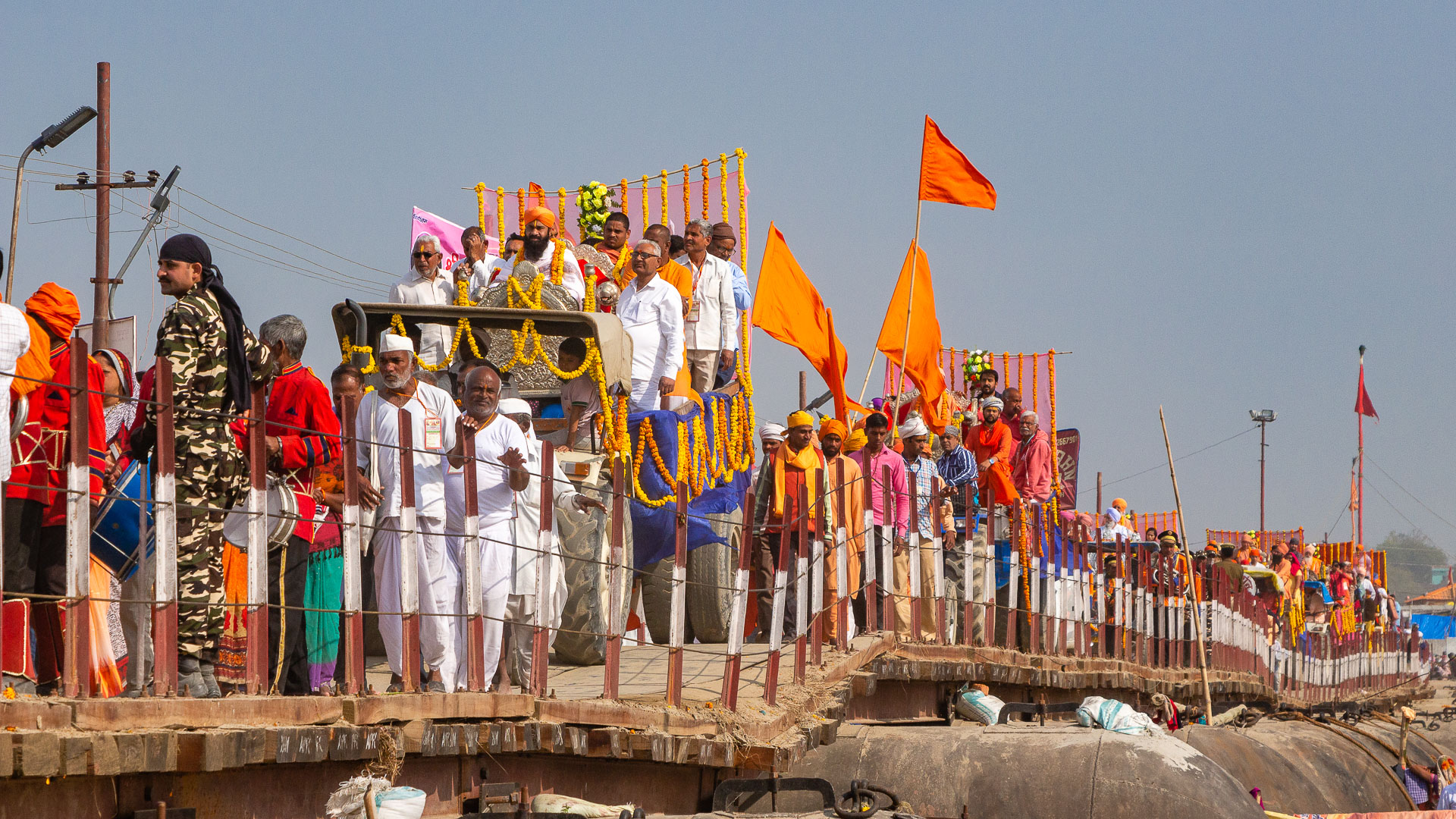
Gurus and their followers parade across a bridge over the Ganges River as they go to bathe in its waters during the Kumbh Mela. Photo by Max Power.
We can see children reenacting the Kumbh Mela story and help our own children know the Hindu worldview so they, and we, can better engage Hindu friends with the gospel.
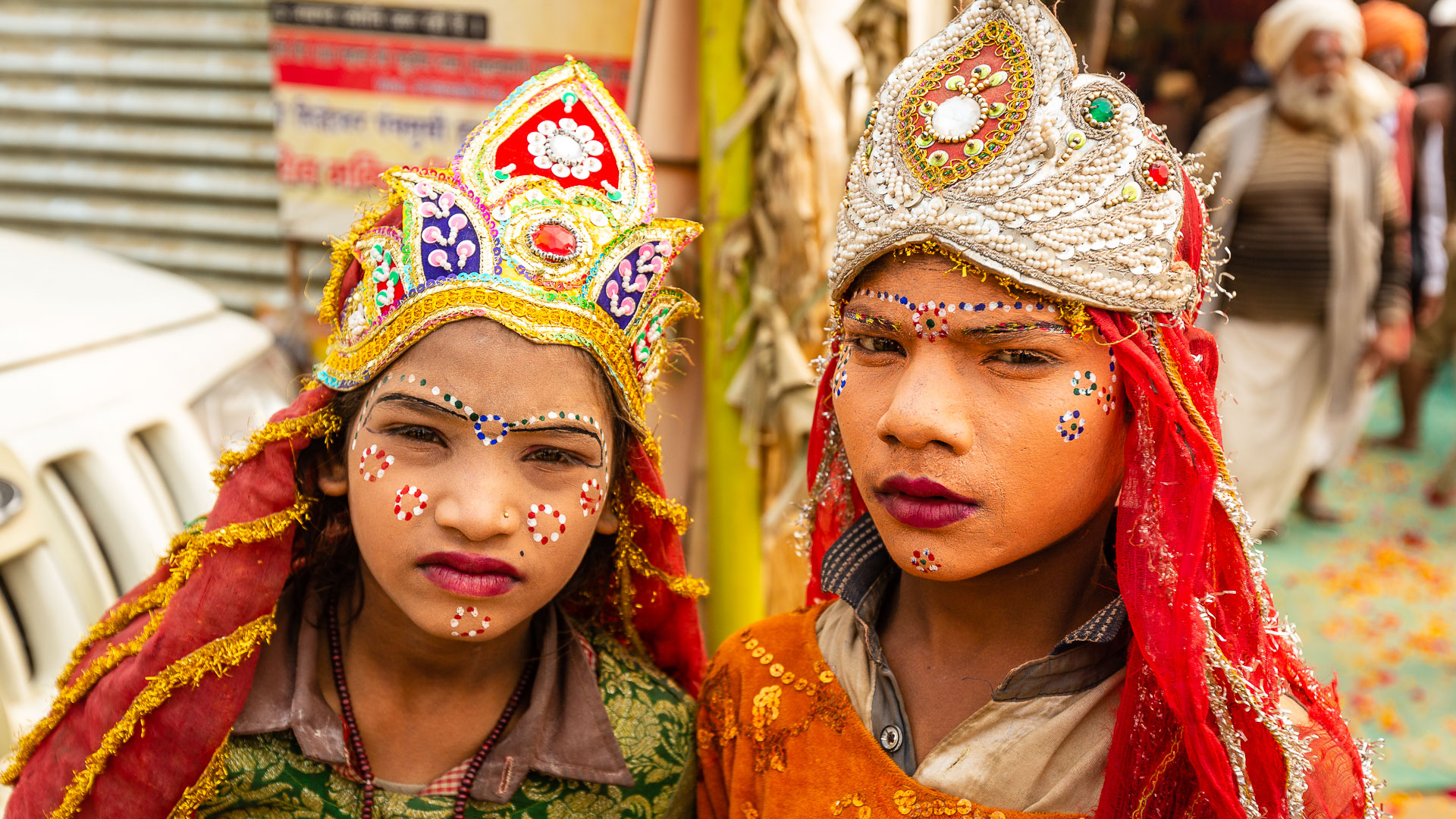
Children dress up as Hindu mythological characters for performances during the Kumbh Mela festival. Photo by Max Power.
And we pray, give, and go so South Asians can be a part of what will one day be the largest religious gathering of all time: people from every nation, tribe, people, and language in front of the throne of the Lamb, proclaiming, “Salvation belongs to our God” (Rev. 7:10).
Rachel Cohen is a content editor for imb.org. She lives with her husband and daughter in South Asia.
Max Power was raised in Sub-Saharan Africa and returned to the US to study technology, art, and film in university. He is now back in Africa working as a Media Specialist alongside his wife of fifteen years and their two kids.
Liam Mark narrated and produced the video. He lives with his wife and two kids in Southeast Asia, where he works as a Media Specialist.

